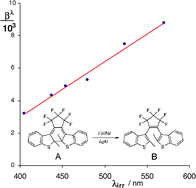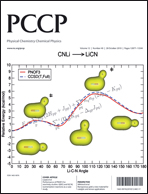A new actinometric procedure based on the analysis of kinetic traces of the actinometer is proposed in this study. It is suitable for thermally-stable photochromes, such as diaryethenes, which may be useful candidates for visible-range actinometry. The treatment of the traces employs a rate law which was achieved via the closed-form integration of the differential equation describing the kinetics of unimolecular photoreactions (i.e. an initial species A converted into a photoproduct B, AB(1Φ)), subjected to monochromatic irradiation. The advantage of the present method is that it may allow the development of reliable actinometers without the need for prior knowledge of some important reaction attributes, namely, the absolute values of the photoreaction quantum yield, the concentration and the molar absorption coefficient of the actinometric species at the irradiation wavelength or their variation with irradiation. This method has been tested against both kinetic data obtained from Runge–Kutta calculations and experimental traces of a diarylethene derivative. The usefulness of this derivative for actinometry has been studied in the visible (405–570 nm) spectral range. It has also been shown that the procedure can be applied to individual measurements from steady-state experiments and it is able to identify and overcome quantum yield variability with irradiation wavelength. This method is expected to help recruit AB(1Φ) photochromes for actinometry with the aim of extending their operative range over the entire visible region.

You have access to this article
 Please wait while we load your content...
Something went wrong. Try again?
Please wait while we load your content...
Something went wrong. Try again?


 Please wait while we load your content...
Please wait while we load your content...